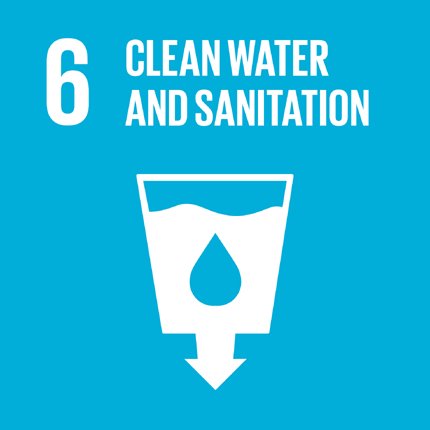sdg6
SUSTAINABLE DEVELOPMENT GOAL 6
Achieve gender equality and empower all women and girls
Progress of goal 6
- Water and sanitation are at the very core of sustainable development, critical to the survival of people and the planet. Goal 6 not only addresses the issues relating to drinking water, sanitation and hygiene, but also the quality and sustainability of water resources worldwide.
- In 2015, 4.9 billion people globally used an improved sanitation facility; 2.4 billion did not. Among those lacking adequate sanitation were 946 million people without any facilities at all, who continued to practise open defecation. In 2015, 68 per cent of the global population was using improved sanitation facilities compared to 59 per cent in 2000. Nevertheless, the unsafe management of faecal waste and wastewater continues to present a major risk to public health and the environment.
- More progress has been made in access to drinking water. In 2015, 6.6 billion people, or 91 per cent of the global population, used an improved drinking water source, versus 82 per cent in 2000. Despite that improvement, an estimated 663 million people were using unimproved water sources or surface water that year. While coverage was around 90 per cent or more in all regions except sub-Saharan Africa and Oceania, widespread inequalities persist within and among countries. Moreover, not all improved sources are safe. For instance, in 2012 it was estimated that at least 1.8 billion people were exposed to drinking water sources contaminated with faecal matter.
- Holistic management of the water cycle means taking into account the level of “water stress”, calculated as the ratio of total fresh water withdrawn by all major sectors to the total renewable fresh water resources in a particular country or region. Currently, water stress affects more than 2 billion people around the world, a figure that is projected to rise. Already, water stress affects countries on every continent and hinders the sustainability of natural resources, as well as economic and social development. In 2011, 41 countries experienced water stress, an increase from 36 countries in 1998. Of those, 10 countries, on the Arabian Peninsula, in Central Asia and in Northern Africa, withdrew more than 100 per cent of their renewable fresh water resources.
- Integrated water resources management, one of the follow-up actions to the Plan of Implementation of the World Summit on Sustainable Development (Johannesburg Plan of Implementation), aims to address this urgent situation. In 2012, 65 per cent of the 130 countries that responded to a survey question on integrated water resources management reported that management plans were in place at the national level.
- Total official flows for water and sanitation were $10 billion in 2014, of which total aid flows from DAC donors amounted to $8 billion. Aid for water and sanitation nearly doubled as a share of ODA during the International Drinking Water Supply and Sanitation Decade (1981-1990). Since that time, on average, it has remained at around 7 per cent of total aid flows. Better targeting and tracking of water aid within the context of national situations is needed. For instance, numerous countries with limited access to water supply and/or sanitation have been receiving minimal external assistance (typically less than $2 per capita annually), while other countries with higher levels of access have received much more (at least $30 per capita a year).
- Effective water and sanitation management also depends on the participation of stakeholders. According to a 2013-2014 Global Analysis and Assessment of Sanitation and Drinking-Water survey, 83 per cent of the 94 countries surveyed reported that procedures for stakeholder participation were clearly defined in law or policy. In the Sustainable Development Goals, the focus is being refined to also include the participation of local communities, which will be captured in the next cycle of Global Analysis and Assessment of Sanitation and Drinking-Water monitoring.
Source: United Nations, Department of Economic and Social Affairs, SUSTAINABLE DEVELOPMENT KNOWLEDGE PLATFORM
The National Indicators for Sustainable Development Goal 6 are:
- Water exploitation index by type of water source
- Bathing sites with excellent water quality by locality
All available data in .xls file:
- Clean water and sanitation
Last Updated: 25/4/2025
EU SDG indicator set
To measure SDG achievement in an EU context, an EU SDG indicator set was developed under the leadership of Eurostat. The purpose of this set, which is structured along the 17 global Sustainable Development Goals, is to monitor progress towards the SDGs at the European level.
- For the complete set of indicators available in the Eurostat database, click here.
- To compare Greece’s progress on specific indicators for each Sustainable Development Goal, click here [data visualisation].

